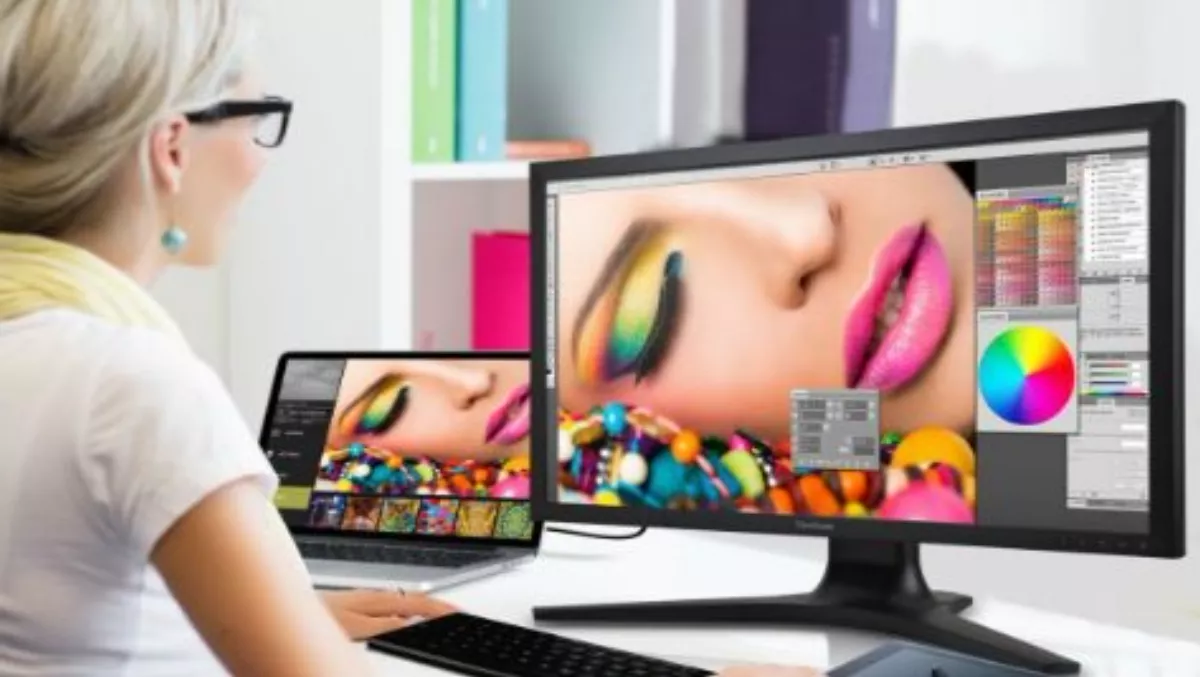
Hands-on review: Viewsonic 4K VP2780-4K monitor
We've grown accustomed to the idea that a monitor is a monitor. That they're easy to plug in and that different cables provide not that much of a difference in the quality of the image on screen.
All of those assumptions need throwing out the window when it comes to 4k displays. While the monitor might look similar out of the box to other monitors, that's where the similarities end.
We got hands on with an awesome new Viewsonic VP2780-4K monitor. It's a 4k display with a native resolution of 3840x2160.
The descriptions Ultra HD and 4k are interchangeable.
The Viewsonic monitor itself comes with an HDMI port, two MHL ports and two DisplayPorts (one mini and one full).
It also includes two USB 3.0 upstream ports that will be much more useful in the future. By having these ports you're future proofing that your purchase will connect with future computers. Apple is blazing the way on it's new MacBook range by not including any connectors apart from USB 3.0 onboard.
The key thing that you need to take into account before buying a 4k monitor is the graphics card on your computer and the cable. What most people don't realise is that the HDMI standard got updated in September 2013 to version 2.0 to allow for the massive 4k resolutions on these new monitors. This means that you need to ensure that the HDMI cable and or adapter you use to connect the 4K monitor to your computer are both HDMI 2.0, otherwise you'll not be able to achieve the best resolution of 3,840 x 2,160.
Also you need to ensure that your graphics card can produce 3,840 x 2,140 at at least 60Hz. If you're on a notebook it'll need to be able to produce that for the external monitor and still have enough power to continue to display on the notebook screen. You'll need a serious graphics card, netbooks won't cut it.
Another connectivity option is MHL which is a new standard primarily designed for plugging smartphones and tablets with a micro USB port into a larger display. Like HDMI it's uncompressed, setting it apart from wireless solutions. There are some complicated ways for you to use two MHL connections at once to provide more throughput to get even better results on an 4k monitor.
Once you're connected, the monitor is flawless. Our office has a lot of natural light and it was still incredibly bright. There is some form of anti-glare coating on the monitor which prevented all reflections in our demanding environment.
The menu options on the monitor itself are easy to follow and I adore the stand its on. I'm 6 foot 4 tall and for me it's important that the stand can be adjusted to suit my eye height. Not only can you turn the monitor to a vertical orientation, but raise it up and down as swivel it from side to side.
The viewing angle is incredibly wide also with a full 178 degrees vertically or horizontally.
I was initially going to write both a pros and a cons section, although once I got the right cable I couldn't find a single flaw.
My Viewsonic 4K experience was simply flawless.


